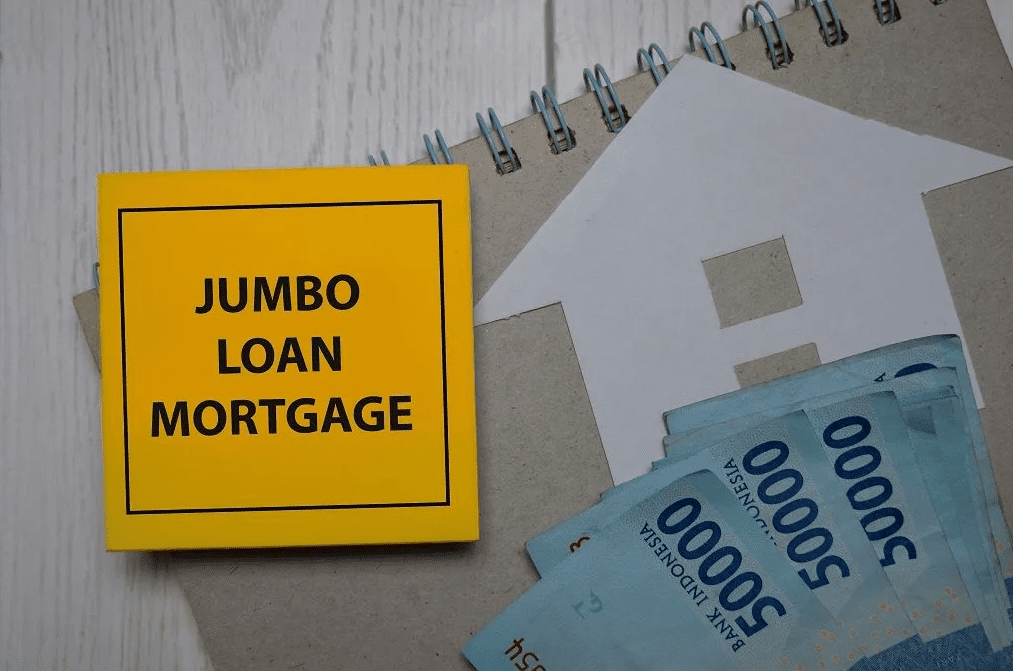How Does a Jumbo Loan Work
Jumbo loans, also known as non conforming loans, are defined as any mortgage with a loan amount greater than the conforming loan limit set annually by the Federal Housing Finance Agency, or FHFA. To most consumers, that doesn’t mean much, so let’s start this post with a quick review of the most common loan types and how they relate to the definition of a jumbo loan.
Loan Types
There are various types of loans which are generally defined by the agency that sets the guidelines for the specific loan type and then purchases and/or insures the loan after it’s closed by a lender. If a mortgage falls into one of these categories, it is not considered to be a jumbo loan.
Conforming Loans
The most common type of loan are the conforming loans which are originated under the guidelines of Fannie Mae and Freddie Mac. While many people call these conventional loans, they are more properly called conforming loans because they “conform” to the rules set forth by those agencies. Fannie Mae and Freddie Mac are regulated by the US government’s Federal Housing Finance Agency, or FHFA.
Fannie Mae and Freddie Mac purchase mortgages from lenders and then package them into pools of loans which are sold to investors who receive the interest income from those loan pools. This process is called securitization and has many benefits to both consumers and the financial markets, most notably that of ensuring a stable mortgage market and allowing lenders can replenish their lending capital.
Each year, the FHFA sets the maximum loan limits for loans that can be purchased by Fannie and Freddie. If a mortgage amount exceeds these loan limits, the mortgage is considered to be a jumbo loan and is not eligible for purchase by Fannie or Freddie.
FHA Loans
FHA loans are insured by the Federal Housing Administration (FHA) and, like the conforming loans, have maximum loan amounts which the FHA sets each year. The maximum loan limits for FHA loans are lower than those for conforming loans and vary based on the county or Metropolitan Statistical Area in which the home is located.
VA Loans
In order to provide housing opportunities for eligible US military veterans, the Department of Veteran Affairs insures VA loans, which are provided through a network of approved lenders.
VA does not set a maximum loan amount, but does have a maximum “entitlement”, an amount which determines how much down payment a veteran must make when purchasing a home. VA borrowers can get 100% financing up to a loan amount matching the conforming loan limits. Any loan amount over that is considered a VA jumbo loan and requires some down payment, the amount of which depends on the loan size.
USDA Loan
USDA loans are insured by the United States Department of Agriculture and are designed to promote homeownership in rural areas. USDA sets their maximum loan limits at the same level as conforming loans.
Jumbo Mortgages
Having quickly described the various traditional loan categories, the definition of a jumbo or non conforming loan should now make more sense. A jumbo loan is essentially any mortgage with a loan amount greater than the loan limits established by Fannie and Freddie. The current baseline loan limit for a single-family home is $647,200 in the contiguous 48 states and Puerto Rico. While there are higher limits for high cost areas and multi-family properties, for most people any loan amount greater than $647,200 will be a jumbo loan.
Jumbo Loan Characteristics
The first thing to note about jumbo loans, other than the loan amount, is that there is no national underwriting standard for jumbo loans like there is for the loan types described earlier. Every bank or lender that offers jumbo loans sets its own guidelines and interest rates. That means there can be quite a difference in the available options and rates for jumbo loan products. While it’s always advisable to shop around when obtaining a mortgage, this is especially true for jumbo loans because of the variability in offerings from different banks and lenders.


What Does It Take to Qualify for a Jumbo Loan?
With jumbo loan lenders all setting their own underwriting guidelines, it’s not possible to detail jumbo loan approval criteria that apply across the board. However, when comparing jumbo loan requirements to those of conforming loans, there are some areas where differences consistently appear.
Down Payment Requirements
Jumbo mortgage loans tend to require a larger down payment than conforming loans. With conforming loans, down payments as low as 3% of a home’s purchase price are available. In the jumbo loan realm, some lenders allow a 10% down payment, but most lenders require a 20% down payment.
Credit Score
Credit score requirements are typically higher for a jumbo mortgage loan compared to those for a conventional mortgage. It’s common for the minimum credit score on a jumbo loan to be 700 or higher, while conforming loan credit scores can go as low as 620. FHA and VA loans can go even lower in some cases.
Lower down payment scenarios on jumbo loans often require higher credit scores than those needed if the buyer makes a higher down payment. For example, a lender may require a 700 credit score for a loan with a 20% down payment, but a 740 credit score if the down payment is only 10%.
Debt to Income Ratio
The debt to income ratio is the percentage of gross monthly income that is obligated to pay monthly debts, including housing cost (mortgage principal and interest, tax and insurance escrows, private mortgage insurance where needed, and home owner’s association dues).
As with most underwriting areas, jumbo loans usually have more restrictive requirements regarding debt to income ratios. Where a conventional loan may allow a debt to income ratio as high as 45% – 50%, a jumbo loan often caps at 36% – 40%.
Cash Reserves
It’s common for mortgage lenders to require greater cash reserves on jumbo loans than what would be required on more traditional loans. Some jumbo loanss also require these reserve funds, whether they be in a bank account or investment accounts, be pledged as security and/or held in an account with the bank offering the jumbo mortgage.
Appraisal
Appraisals can be a pain point when it comes to jumbo loans. There are fewer high value properties in most areas and many of these high value homes are “lifetime” homes for their owners. Fewer homes in that high value range with the limited turnover means there may not be as many recent similar sales for an appraiser to use as compared to those available with values in lower price ranges. This can make it difficult for an appraiser to establish an accurate market value estimate. Because of this, some lenders require two appraisals on jumbo loans over a certain amount.
The cost of appraisals for higher value homes is often higher than for a home falling into the conforming loan category. This is due to both the complexity of the appraisal (larger homes usually have more rooms, square footage, and amenities) and the difficulty in obtaining comparable properties to use in the appraisal report.
Jumbo Loan Limits
There is no national standard establishing a maximum jumbo loan limit. Each lender sets the maximum amount it’s willing to lend. Many lenders set a maximum amount in the $2,000,000 range.
Jumbo Mortgage Interest Rates
Jumbo loan rates have recently been close to, and sometimes slightly better than the conforming loan rates. Like the underwriting guidelines, rates can vary significantly among lenders, so it’s good to shop around.
Because the jumbo loan amount is so large, it’s wise to consider an adjustable rate mortgage (ARM) loan due to the fact that ARM interest rates are usually a bit lower than the fixed rates. That means lower mortgage payments. Long duration ARMs where the interest rate remains fixed for seven or ten years can be particularly attractive low-risk options.
Jumbo Loan Closing Costs
Jumbo loans are likely to have much higher closing costs than conforming loans. Certain closing costs such as title insurance are priced based on the loan amount, so the higher jumbo loan amount drives up these costs. Because origination fees and discount points are based on the loan amount, the same dynamic can push these costs higher.
As mentioned before, the complexity of higher value homes can push up the appraisal cost and a second appraisal may also be required.
Jumbo Loan Strategies
A jumbo loan is the right product for many people, but some cannot qualify due to the more restrictive underwriting guidelines required by most lenders. In those cases, a buyer may need to stick to a conventional conforming loan. Here are a couple of ways to accomplish that.
Make a larger down payment so that the mortgage amount doesn’t exceed the baseline conforming loan limit – typically $647,200. If there isn’t sufficient liquid cash to do this, consider a loan against a 401(k) account or gift funds from a family member.
Take a first mortgage of $647,200 and then add a second mortgage or home equity line to get the remaining funds needed to buy the home.
Jumbo loans are complex, so if you need a jumbo loan, consult a trustworthy, knowledgeable loan officer. Our team at GoNoCost Mortgage is equipped with both the expertise and product options to help you with all your home financing needs, including a new jumbo loan.












